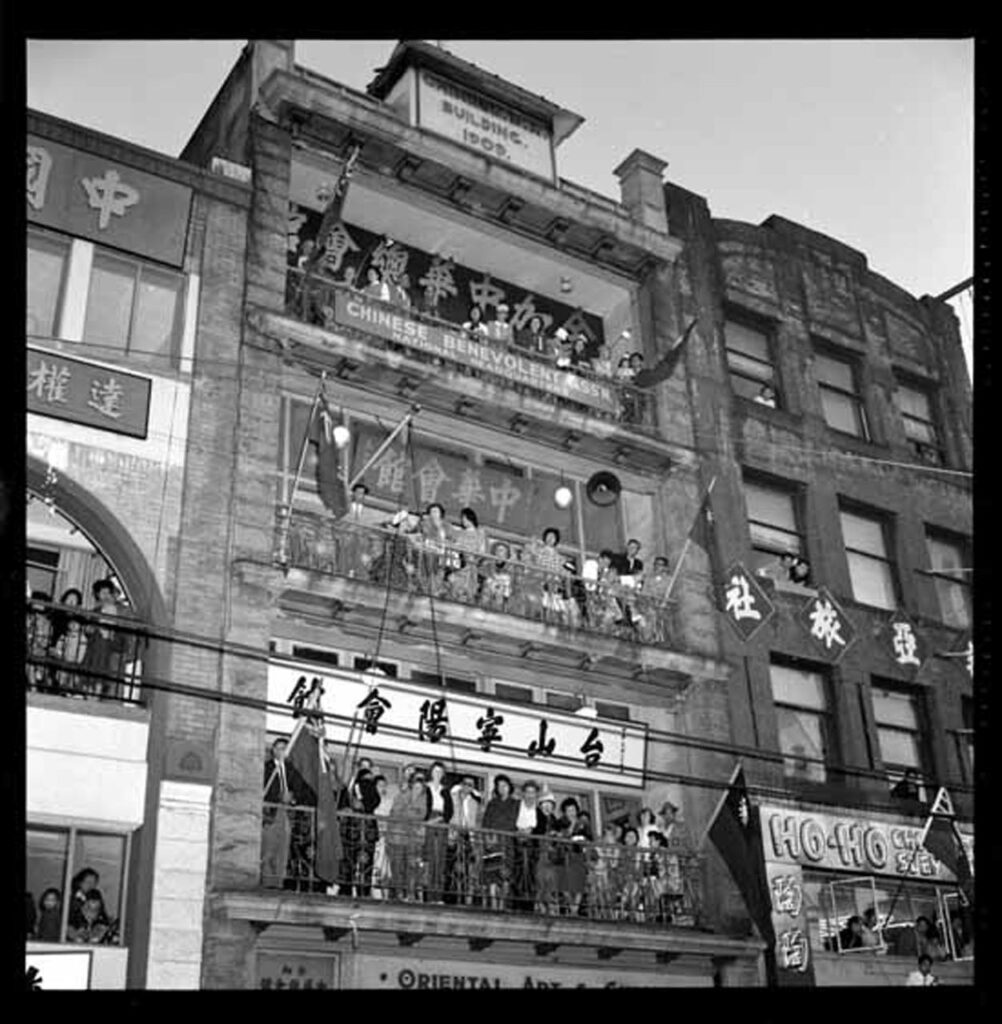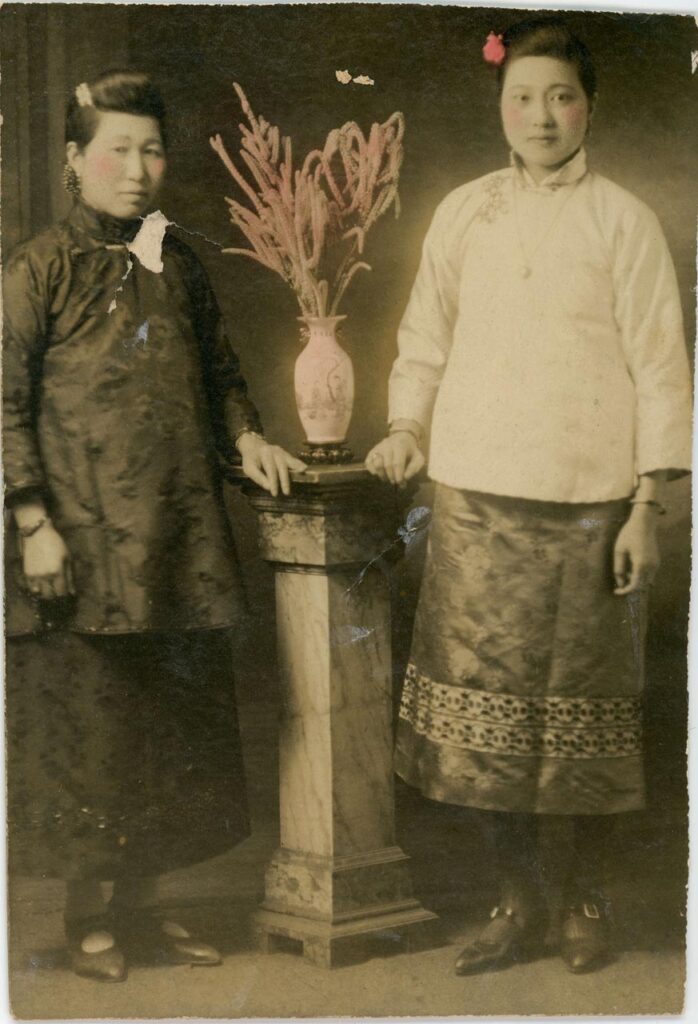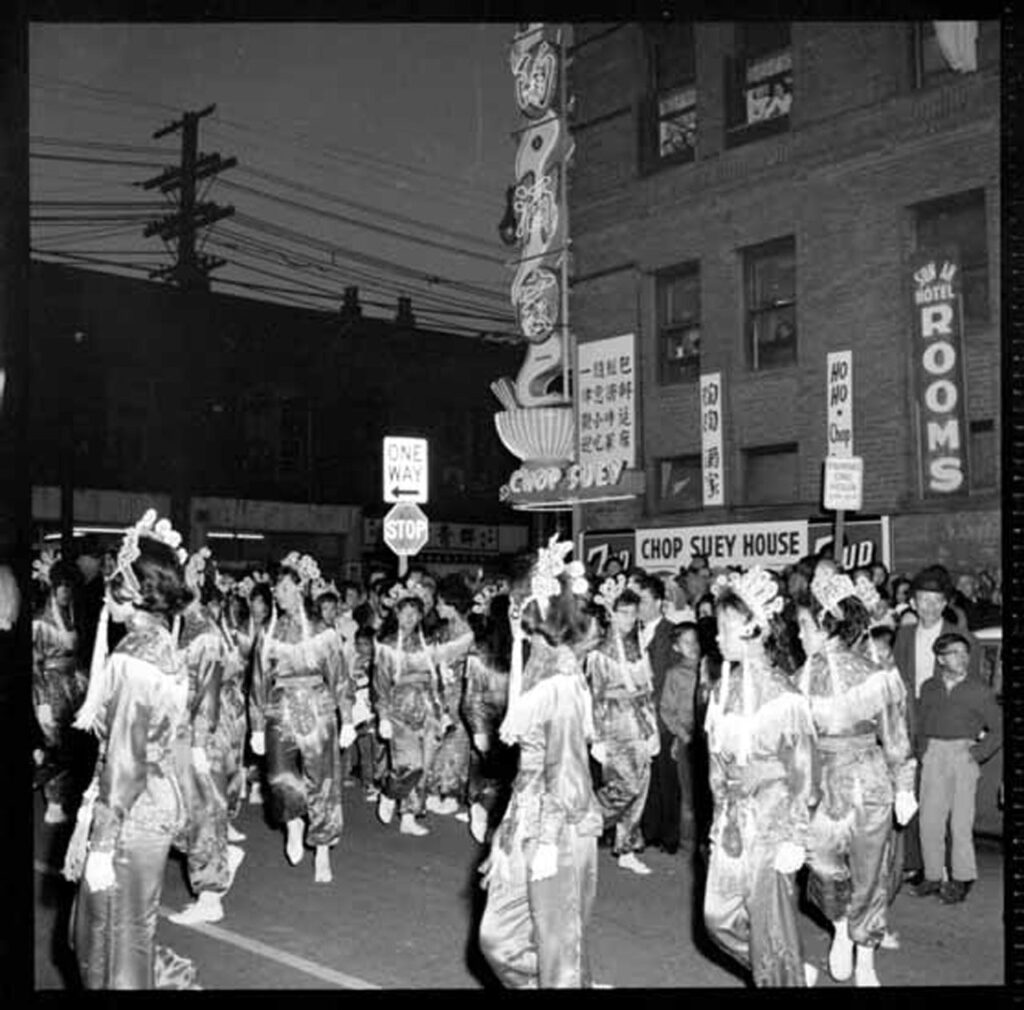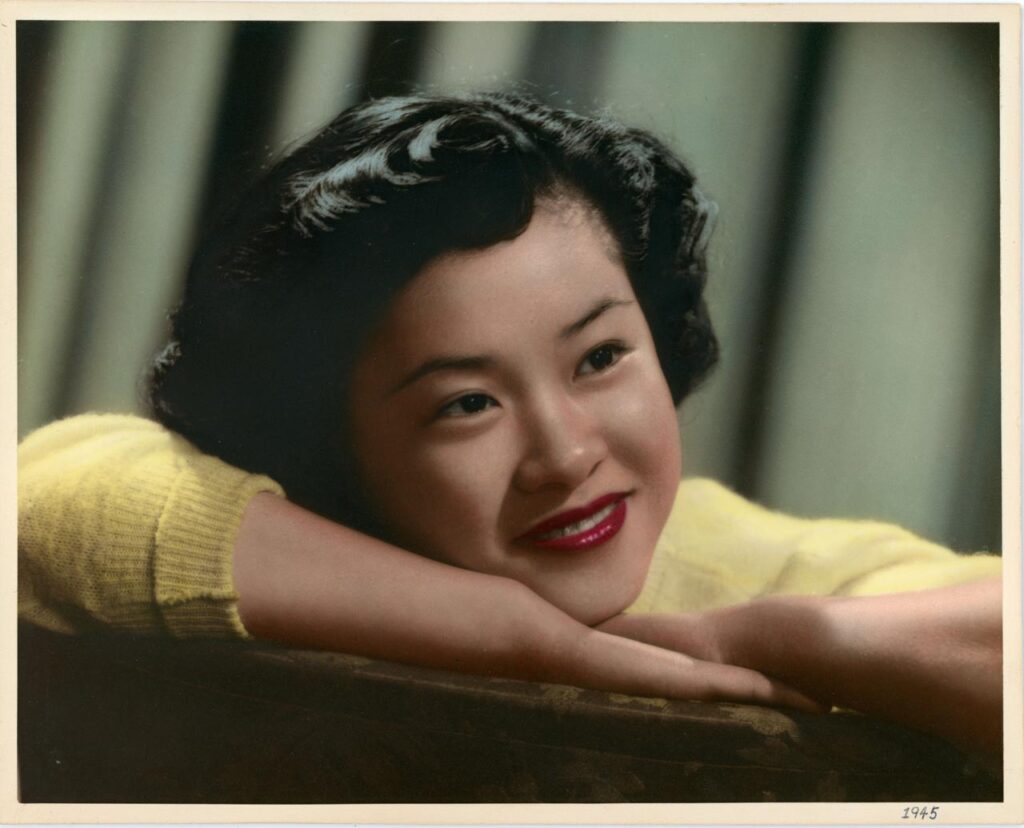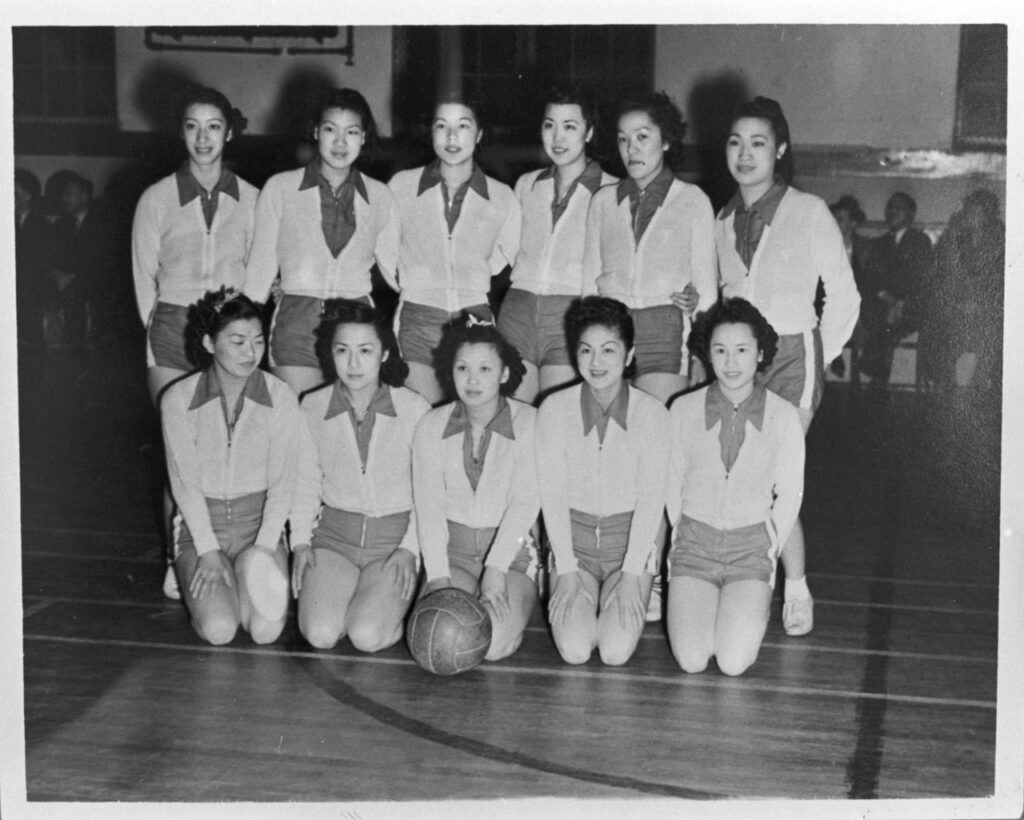Lesson #4: Public Art as Advocacy in Chinatown

Millenium Gate in Vancouver Chinatown, 2006, photograph by Bobanny, Wikimedia Commons
Guiding Questions
- How can I contribute to meaningful transformation in my community?
- What is advocacy? What is change?
- How is advocacy sustained over time?
- Where are the intersections between advocacy and change?
- How can I contribute to righting historical wrongs?
Curricular Competencies
evidence; continuity and change; cause and consequence
Teacher-Led Lesson
Because this lesson asks students to consider what it means to be a member of a community and to reflect on their identity and their role in their community, it is important that the learning environment promotes intellectual curiosity, thoughtful engagement, and respectful appreciation of different perspectives and ideas about identity and community. If you have not already explored Lesson #1 with your class, please consider taking the time to do so now.
Begin by asking students (individually or in pairs): What is advocacy? You can choose to write student responses on the board or develop a class discussion. Ask students what advocacy means and what it looks like. Together brainstorm a list or web of responses. Do students agree with all the responses? Why or why not? Have students consider different forms of activism that they may know or have seen, thought of, or participated in.
Using the archival images from the supplementary resources folder, have students work in groups to compare and contrast historical advocacy and activism in Chinatown. Assign each group one or two photographs and, using markers and chart paper, answer the following questions:
- Who do you see in these photos? Who do you not see?
- Who is portrayed in positions of power? How do we know they are in power?
- Who is represented? Who is visible and who is invisible? How do you know?
In groups, have students present their assigned photos and their findings to the rest of the class. Invite students to debrief and discuss, either in their groups or as a whole class. Ask:
- What did they notice in this activity about the portrayals of the community?
- What did they notice about the leaders portrayed?
- What is the connection between students’ observations and findings and the historical advocacy in Chinatown? Who gets to advocate? Who does not?
Explain to students that it is important to learn about the community and context in which the Suzhou Alley Women’s Mural is situated in order to understand the mural as a form of advocacy and activism. How might SAWM resonate with community members who were historically excluded from advocacy and activism in Chinatown? The goal of this lesson is to develop student understanding that advocacy can take on different forms of activism and change over time.
Show students “The Making of the Suzhou Alley Women’s Mural: A Conversation with the Artists” from the supplementary resources folder. Discuss how the mural is a form of activism that advocates for the acknowledgement of Chinese Canadian women and their historical and ongoing contributions to community and society. How does the SAWM include these women in Chinese Canadian advocacy and activism? How do we as a society include people in advocacy and activism? After learning about the mural-making process from the artists, have students write a reflection on what they’ve learned about advocacy and activism. If students need additional support with writing their reflections, revisit the guiding questions for the lesson and have them respond to one of their choosing.
Culminating Activities
Four possible culminating activities include developing a plan of action; assessing the richness and diversity of current local advocacy work; designing a comic depicting past, present, or future local advocacy; and creating a visual vignette as a group showing a scene of advocacy (elaborated in detail). All four tasks are recommended for grades 5 and 9–12.
1) Develop an Action Plan
Invite students to consider the mural as advocacy work. See activity 4 for more ideas on how to extend the conversation. Organize students into small groups to brainstorm examples of different types of advocacy work. Students may offer the following responses:
- calling or writing to a local politician,
- contacting the media,
- organizing or showing up to protest,
- standing up for someone when they are not present,
- starting a club,
- writing and performing songs or poems of advocacy, or
- showing what matters to you on social media.
Encourage students to reflect on what advocacy looks like for them. Ask students to choose an action they could take in their community and to develop a plan of action to implement it. They should include their goals, message, means, and methods. This task can be done individually or in pairs, if students have similar objectives and interests.
2) Assessing Advocacy Groups
Ask students to examine a small sampling of local advocacy organizations, including those working in or for Vancouver’s Chinatown. What do these organizations have in common? How are they different? Ask students to choose one organization to profile and assess. Students will then share their assessments and discuss what makes an advocacy group effective. Group work is recommended to encourage discussion and debate, as well as to limit the amount of research and class presentations.
* Worksheet: Lesson #4 Assessing Advocacy Groups
3) Design a Comic
Invite students to create their own comic depicting a story of advocacy or response to discrimination or injustice. Students can base their stories on a past or present person or event in Chinatown, in the SAWM, or in local or national history, or they can imagine a future scenario. Encourage students to feature themselves in the comic in the case of an imagined future advocacy story. This activity can also be done in pairs. To provide an example, consider sharing the graphic novel Escape to Gold Mountain by David Wong.
4) Create a Visual Vignette
This task may take more time and has been elaborated in more detail. Explain to students that they will work in small groups to portray themselves projected in the near future in a scene inspired by the vignettes included in the SAWM and in response to the question: How can I contribute to meaningful transformation in my community? They will create a visual vignette, which could take the form of a living tableau or a medium- to large-scale image.
Explain that the SAWM represents a tangible form of collective cultural expression, designed to animate Suzhou Alley as a symbolic public space. It is located near the original 1880s settlement site of the city’s first Chinese community, and it aims to diversify the telling of Chinese Canadian history in the local landscape.
- Discuss as a class how the SAWM could be considered an act of advocacy or activism, including:
- How does the SAWM foster intergenerational community engagement and relationship-building?
- How does the SAWM contribute to the democratization of the cultural landscapes of Vancouver?
- What may have inspired the artists of the SAWM to take this action of expression?
- What were their goals and how did they achieve them?
- What other examples of activism or advocacy can we brainstorm from our own community and beyond?
To confirm their inferences, share “The Making of the Suzhou Alley Women’s Mural” from the supplementary resources folder. Debrief the activity with students and encourage them to reflect on the inspiration and goals of the SAWM artists.
To prepare for the assignment, provide time for quiet reflection by asking students to respond to the following questions by writing or drawing independently:
- After viewing the SAWM, how do you think about community?
- After viewing the SAWM, how do you think about activism?
- How might I describe or define my community?
- How might my identity play a role in my thinking?
- What challenges or issues is my community facing?
- What matters the most to me?
- What might my own advocacy goals be?
- How might I have an impact on my community?
As a class, discuss some of the responses to the reflection questions or the questions themselves. Arrange students in small groups for collaboration to build a community scene. Encourage students to continue exploring their ideas for meaningful change respectfully and thoughtfully, and promote forward-thinking and being open-minded to possibilities.
Remind students that their objective is to create a visual vignette as a group that shows a scene of themselves in their community making a difference or having an impact. The scenes could feature advocacy goals that are meaningful to each member of the group, or students could design their scenes around a shared objective.
Assessment
If you choose to assess any of these culminating activities, you may prefer to use Social Studies proficiency scales that you are familiar with or you may apply some of the following assessment criteria:
- Developed a reasonable plan of action that includes actionable items, clear steps, and achievable objectives.
- Compared and contrasted by noticing important differences and similarities and applying criteria effectively.
- Created an authentic, plausible, evidence-based representation.
- Reflected a plausible, personally relevant, actionable role in future advocacy.
